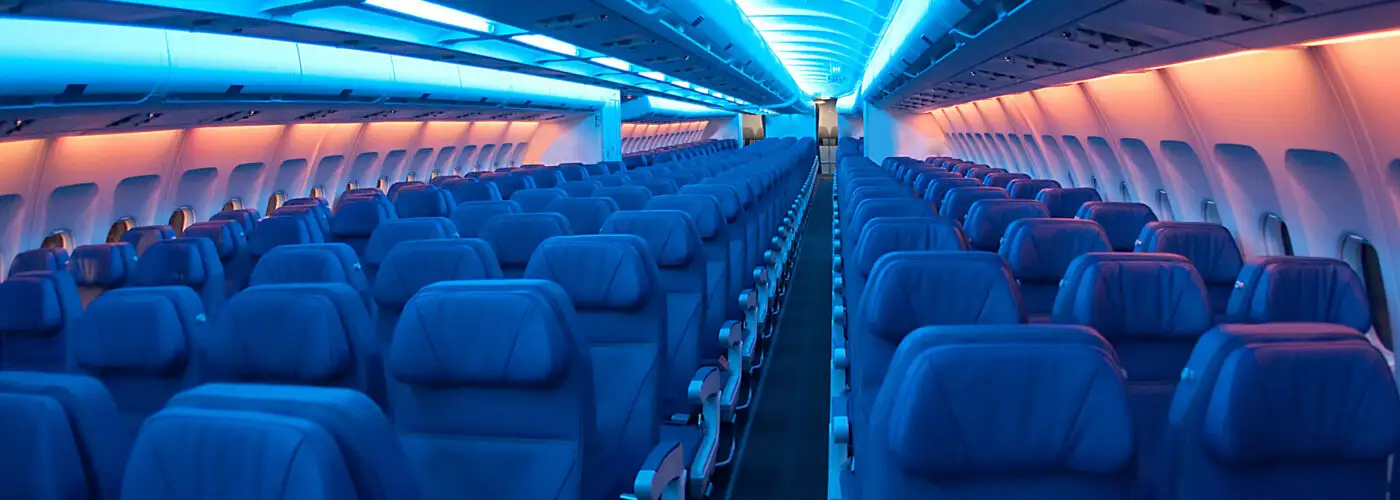Experienced flyers know the drill—when a plane is taking off or landing, the cabin lights are dimmed. You may have wondered why lights are lowered during these periods of the flight—afterall, wouldn’t bright light be better to see if anything goes wrong?
Sarah McWilliams Guerra, a former Delta Air Lines flight attendant, tells SmarterTravel, “At night, it’s beneficial to have the cabin to be the same level of lighting as outside. That way if there is a crash at landing, the flight attendants won’t have to adjust to the outside lighting to help aid in a faster evacuation.”
Making the cabin darker will also make the glowing emergency path-lighting and exit signs more visible and potentially help passengers find their way out of a plane faster if needed.
This is also why flight attendants will ask passengers to raise their window shades during takeoff and landing—so that everyone’s eyes can adjust to the light conditions outside. (Having the window shades open is also important so that flight attendants can see any hazards outside the aircraft.)
You Might Also Like:
• 6 Ways to Avoid Getting Sick After Flying• Flight Attendants Reveal Their Secrets for a Better Flight
• Luggage Locks: Should I Lock My Suitcase When I Fly?
• 7 Air Travel Secrets You Didn’t Know
• Flying with Gifts: The TSA Rules You Need to Know
We hand-pick everything we recommend and select items through testing and reviews. Some products are sent to us free of charge with no incentive to offer a favorable review. We offer our unbiased opinions and do not accept compensation to review products. All items are in stock and prices are accurate at the time of publication. If you buy something through our links, we may earn a commission.
Related
Top Fares From
Today's Top Travel Deals
Brought to you by ShermansTravel
Shop and Save with Country Inns...
Patricia Magaña
 Hotel & Lodging Deals
Hotel & Lodging Deals
$229 -- Chicago: Discounted Rates and...
Francesca Miele
 Hotel & Lodging Deals
$229+
Hotel & Lodging Deals
$229+
$188 -- Honolulu: Save on Oceanview...
Abigail Lamay
 Hotel & Lodging Deals
$188+
Hotel & Lodging Deals
$188+




